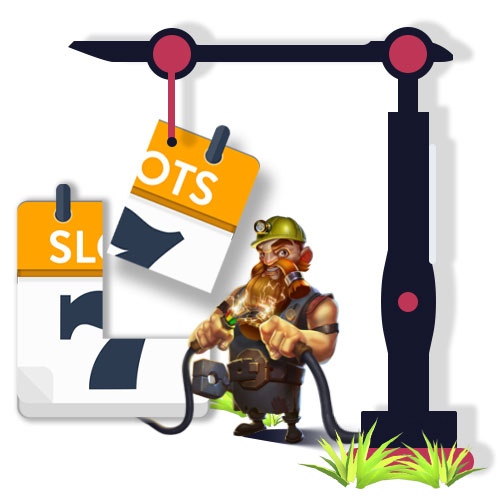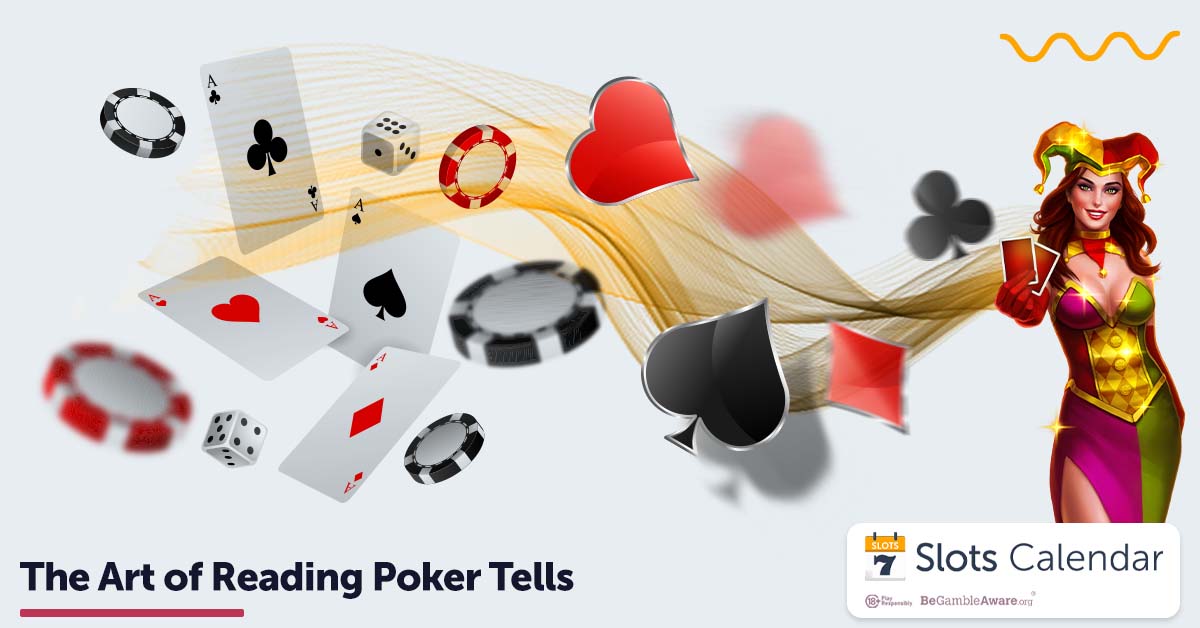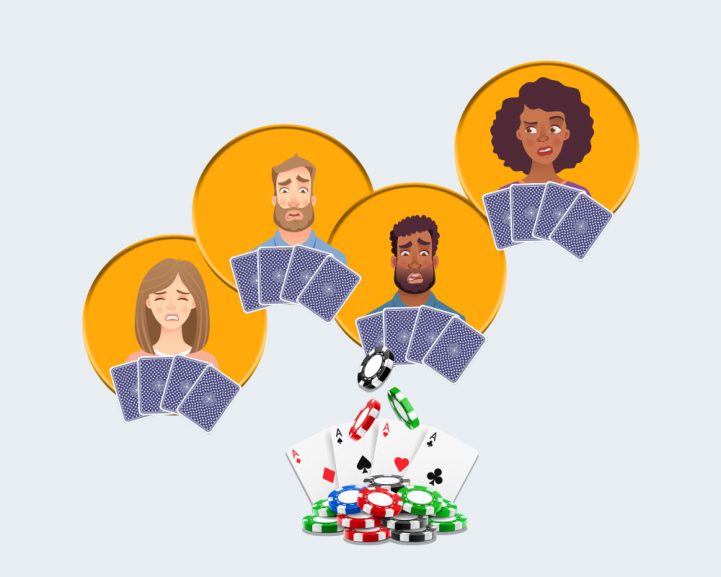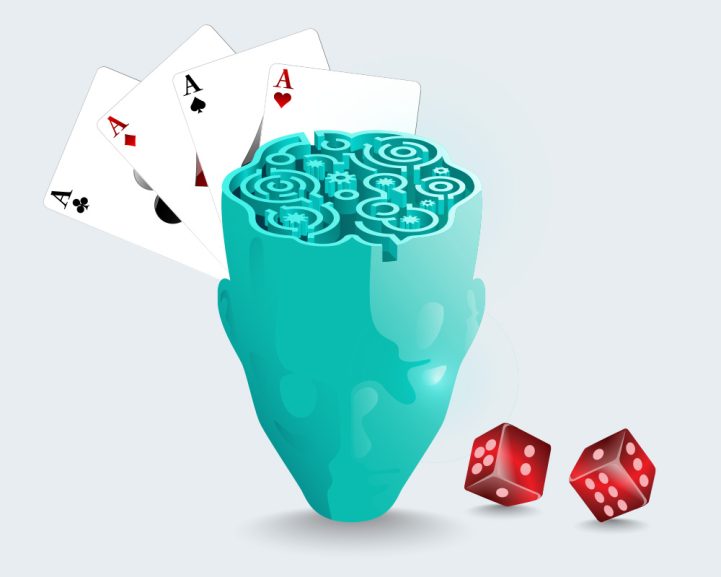In the intricate world of poker, where every card dealt, and every bet made conceals intentions and strategies, the unspoken language of poker tells is a powerful tool. If your goal is achieving a pro level in poker, then you’ll need to master the unspoken language that lies within the game. For that reason, the purpose of this guide is to help you understand better poker tells and teach you about the hidden signals you will find in a game. So with no further introduction, let’s dive right in!
Poker Pro from the Start
As seasoned players and novices alike gather around the green-felted table, the importance of decoding poker tells takes centre stage.
Think of poker as more than just chips and cards. It’s like a lively theatre where body language, words, and strategies come into play. All these elements have the power to reveal secrets about your opponents.
Mastering the art of reading poker tells isn’t just about the game. It’s actually a skill that divides talented and skilled players apart from the others. It gives you an advantage when making decisions and creating your strategies.
In this guide, we’re going down the rabbit hole to explore everything about poker tells. We’ll break down the secret language of body movements, discover the hidden hints in the way people talk, and untangle the mysteries behind how people bet.
What’s more, we’ll explore tricks regarding deception and reverse tells, getting a grip on how top players cleverly use fake signals to come out ahead.
Join us as we provide you with the tools not just to grasp but actually to apply poker tells to your gaming style.
We’re here to share stories and helpful tips, all with the main purpose of giving you the know-how to boost your poker abilities.
At the end of our guide, you’ll be mastering the skill of reading your opponents and controlling the intriguing factors that turn each hand into a captivating puzzle.
Unveiling the Language of Poker Tells
Poker tells encompass a wide range of actions, expressions, and behaviours that players display while participating in a hand. These actions may differ from physical gestures and facial expressions to verbal cues and patterns in the betting behaviour.
Poker tells are not limited to any specific set of signals; rather, they are unique to each player and can vary based on their personality, playing style, and experience.
Being able to understand all the tells will require a keen sense of observation, some psychological background, and, most importantly, a clear understanding of human behaviour.
The Role of Poker Tells in the Game
Poker tells actually plays a pretty big part in the game, and it goes beyond the cards themselves. This adds an extra layer of strategy to the gameplay at any landbased or online poker site.
So, while it’s pretty important to get a hang of the basic things like knowing the odds, understanding the hand rankings, or having a great betting strategy, another skill also comes into play.
This is being able to read and figure out what your opponents are about to do based on their tells. As you’re mastering this skill, you’ll have a great advantage in the competition.
This sort of information gives you the confidence you need to make smarter decisions, like deciding to fold, call, raise, or bluff. All these influence how the game will end.
Different Types of Tells
There are different types of tells that players can categorise based on the source of information they stem from and the ways in which they manifest during a poker game.
These different types of poker cues offer sharp and experienced players many clues about what their competitors are planning to do or how strong their hands are.
Let’s delve deeper into these categories:
- Physical Tells: These involve a player’s body language, facial expressions, and gestures. For instance, nervousness might lead a player to fidget, sweat, or shuffle their chips when they hold a weak hand.
Conversely, a confident player with a strong hand might exhibit a relaxed posture and steady eye contact.
If you recognise these body signals, you will discover important hints about how your competitors are feeling and how strong their hands may be.
- Verbal Tells: Verbal cues involve what players say during a hand. Subtle changes in tone, pitch, speed, or choice of words can offer clues about their confidence in their hand.
For example, a hesitant response to a bet might indicate uncertainty, while an assertive reply could signal strength.
However, keep in mind the thing that a few players could use words to trick their opponents, making interpretation a subtle skill.
- Betting Patterns: A player’s betting behaviour can be a goldmine of information. Sudden changes in bet size, timing, or consistency can reveal shifts in strategy or hand strength.
For instance, a player who typically bets conservatively suddenly making a large, aggressive bet might be attempting a bluff.
Conversely, consistent bets might indicate a strong hand. While stunning these patterns across several rounds, you will be able to spot trends and make better predictions about your opponent’s movements.
Decoding Physical Tells
When we engage in a conversation, we tend to offer a lot of information even without speaking a word. This is the part where physical tells helps us with the game.
These nonverbal cues cover everything from the expressions on someone’s face to the way they move their body and even the shifts in their gaze. These cues open up a way for us to have an idea of a person’s thoughts and emotions. Often, they convey more than words ever could.
When we take the time to observe and interpret these signals, we gain a clear understanding of what someone is experiencing. We tap into their emotions, intentions, and current state of mind. When trying to read your opponents, make sure you observe the following.
Facial Expressions
Facial expressions hold incredible power in clarifying emotions. Micro-expressions, fleeting and involuntary changes in facial muscle tone, can reveal concealed feelings that an individual might be trying to hide.
A smile might betray genuine happiness, but the tension around the eyes could hint at underlying discomfort. Similarly, furrowed brows and downturned lips could indicate sadness or frustration.
Body Language
Imagine that the human body is a living canvas that beautifully portrays our emotions and intentions. The way we stand, our gestures, and our moves all come together in what we call body language.
An open stance, with arms uncrossed and relaxed, often suggests receptiveness and confidence.
Conversely, crossed arms might indicate defensiveness or discomfort. Mirroring another person’s body language can indicate rapport and connection.
Eye Movements
People often say that the eyes are the “windows to the soul,” and they play a vital role in communication.
Eye movements can reveal interest, deception, and emotional engagement. Prolonged eye contact can signify sincerity and attentiveness, while rapid shifts in gaze might suggest nervousness or distraction.
Moreover, experts say that there is deep meaning in the way we move our eyes, like looking up and to the left or right. This may be a clear image of how someone is thinking about a solution or applying a strategy.
Vocal Cues
Although not strictly physical, vocal cues are closely linked to nonverbal communication. The way we speak, including the changes in tone, pitch, volume, and even the patterns in our speech, can tell a lot about how we’re feeling at an emotional level.
A quivering voice might indicate anxiety or fear, while a confident and steady tone could denote self-assuredness.
Sometimes when we use a pause, we hesitate or change the speed of our speech it may say things about our thoughts and emotions that lie beneath the surface.
How to Interpret These Tells
If you’re able to decode physical tells, then you probably master some skills like good observation and excellent situation understanding, and you also pay attention to subtleties.
Make sure you remember that these cues or signals are not absolute proof of someone’s emotions or intentions. In our case, a player’s intentions and emotions.
Instead, they are valuable hints that you should take into account, along with other details you’ll observe in a specific situation.
To effectively interpret physical tells:
- Observe Holistically: Consider the entire spectrum of nonverbal cues rather than focusing on a single gesture or expression. A person’s body language, facial expressions, and vocal cues should all align to provide a better understanding.
- Establish a Baseline: Familiarise yourself with a person’s typical behaviour in order to identify deviations from their baseline. A sudden change in their usual mannerisms could be indicative of underlying emotions or thoughts.
- Context Matters: Take into account the situation, environment, and cultural norms. A specific gesture can hold different meanings depending on the situation you’re in.
- Cluster Analysis: Look for clusters of cues that reinforce each other. Multiple signals pointing in the same direction enhance the likelihood of accurate interpretation.
- Consider Individual Differences: People express emotions differently. Some might be more expressive, while others are more reserved. Treating everything with a “one-size-fits-all” attitude can easily lead to misunderstandings.
To get a clear idea of how these theories work, let’s have a look at a few examples.
For instance, In a high-stakes negotiation, one party’s poker-faced demeanour seemed confident, but micro-expressions of fleeting anxiety played out around their eyes and mouth.
Combined with subtle fidgeting and rapid eye movements, these cues hinted at underlying nervousness, suggesting that their outward confidence might be a façade.
In the end, these subtle signals encouraged the other players to dig deeper into the negotiation, revealing concerns that hadn’t been brought up before.
Another example of genuine interest would be the following. For example, during a job interview, the candidate’s posture was upright, and they maintained consistent eye contact.
Their facial expressions exhibited a mixture of excitement and enthusiasm, with an occasional nod to acknowledge understanding. These cues collectively indicated a genuine interest in the position and a high level of engagement with the interviewer’s questions.
Unmasking Verbal Tells: Hidden Cues in Communication
The way we talk can tell us so much about what’s going on in someone’s mind, often revealing more than just the words they say.
This thing is called “Verbal Tells,” where several subtle hints come into play. These hints can help us really get what other players are trying to express and how they’re truly feeling.
Verbal Tells include specific elements, all of which can be interpreted to unveil unspoken emotions and thoughts. These elements are:
- Changes in Voice: When people experience heightened emotions, their voice may reveal clues.
An increase in pitch or volume might denote excitement or stress, while a sudden decrease could signify unease or even deception.
For example, a shaky voice while denying an accusation might indicate potential dishonesty.
- Specific Phrases or Words: Certain words and phrases can indicate underlying emotions.
When someone uses positive or negative words, pauses, or uses certain words often, it can tell us what’s going on inside their mind.
For instance, excessive use of phrases like “I’m fine” might hint at discomfort or the desire to hide true feelings.
- Speed of Speech: The pace at which someone speaks can reveal emotional fluctuations.
Rapid speech might reflect nervousness or anxiety, while slow speech could signify careful consideration or an attempt to deceive.
Pauses and hesitations might indicate internal conflicts or the formulation of an answer.
Interpreting Verbal Tells
To accurately decipher Verbal Tells, one must consider the context, baseline behaviour, and clusters of cues.
It’s important to understand that each person is unique, and it’s vital to consider the whole picture when approaching their needs.
For example, a sudden increase in speech speed accompanied by avoidance of eye contact and a high-pitched voice might collectively point towards discomfort with the topic being discussed.
Numerous real-life instances illustrate the power of Verbal Tells.
In a court case, a defendant’s rapid speech, stuttering, and excessive use of denial phrases were indicative of potential deception, which later led to the discovery of their involvement in the crime.
Similarly, in negotiations, a sudden shift to slower speech and avoidance of specific phrases unveiled a hidden willingness to compromise.
Betting Pattern Tells: Insights
The way a player places their bets can reveal a lot of valuable information. Those who pay close attention can gain valuable insights into what cards they might have and the strategies they’re using.
In this section, we’ll explore the details of these betting patterns, uncovering the subtle hints they provide
- Changes in Bet Sizes: The size of a player’s bets often serves as a window into their confidence and the strength of their hand.
Substantial increases in bet sizes can imply a strong hand, as players aim to extract more value from their opponents.
Conversely, small or inconsistent bets might suggest a weaker hand or a desire to stay in the pot without committing too much.
Abrupt shifts from larger to smaller bets, or vice versa, could indicate shifts in the player’s confidence or the quality of their hand.
- Speed of Betting: The rhythm at which a player places their bets can hint at their thought process and emotional state.
Rapid betting might signify a strong hand as players rush to capitalize on their advantage.
In contrast, hesitating before betting could suggest uncertainty or a weaker hand.
Drastic deviations from a player’s typical betting pace might highlight pivotal moments in the game, such as a surprise card that significantly impacts the odds.
- Patterns in Raising or Folding: Observing a player’s tendencies in raising or folding can be revealing.
Frequent raises, particularly after a series of checks, could suggest a player who employs an aggressive style and favours strong hands.
Consistent folding might indicate a player who adheres to a tight strategy, only engaging with high-quality hands.
Recognising patterns in raising and folding can help deduce the range of hands an opponent is likely to possess.
Interpretation of Betting Pattern Tells
Deciphering betting pattern tells requires a blend of observation, intuition, and logical deduction.
To really get a good sense of each opponent, it’s vital to watch and observe how they act in several game rounds and use that as a starting point.
When confronted with a deviation from their established pattern, consider the context of the game.
Have there been significant changes in the community cards? Has the player’s position at the table influenced their strategy?
Finding the right balance between these factors can help you better understand what the betting pattern you’re seeing actually tells you.
For a clear understanding, let’s have a look at the following examples:
- The Bold Bluffer: In a high-stakes tournament, Player A consistently made large bets and rapid raises. However, during a pivotal hand, their betting pattern shifted drastically.
Observing this, their opponent, Player B, deduced that A’s confidence had wavered. Despite A’s history of aggressive play, B called the final bet and won the hand, revealing A’s weak hand and securing victory.
- The Cautious Calculus: In a cash game, Player X was known for measured bets and a patient approach. However, during a crucial round, X began betting aggressively.
Recognising this uncharacteristic behaviour, an observant opponent, Player Y, realised that X must have a powerful hand. Y decided to fold, avoiding potential losses and waiting for a more favourable opportunity.
The Mind Game: Deception and Reverse Tells
In the high-stakes world of poker, the battle isn’t merely fought on the green felt; it’s waged within the intricate realm of psychology.
For example, experienced players use some psychological strategies, like deception or the reverse tells.
If a gambler uses these techniques, they can really stand out from the rest and influence the outcome of their actions.
It can make the difference between a sweet victory and a tough loss, highlighting the strategy that makes poker an excellent card game.
Deceptive Tactics: Unraveling the Mind Games
Experienced players have long recognised the power of deception in poker. If you’re able to trick your competitors with false tells, well that’s a clear sign that you have developed poker skills and you’re also a pro player.
False tells involve deliberately showcasing behaviours that are inconsistent with a player’s actual hand strength.
When players pull off these actions convincingly, they can make their competitors think the wrong things about their cards, influencing in the end the way they play.
For example, a player holding a strong hand might intentionally display signs of nervousness or hesitation, as if they were bluffing.
On the other hand, a player with a weaker hand could project confidence and make deliberate, calculated moves to trick opponents into believing they possess a much stronger hand.
These tricky moves take advantage of how opponents often pick up on subtle physical hints, reminding us that in poker, things aren’t always as they seem.
Deciphering the Enigma: Reverse Tells
Although recognising the usual signs can give us useful clues about what cards our competitors might hold, picking up on reverse tells brings an extra level of complexity to the psychological game we’re playing.
A reverse tell is a deliberate attempt to mislead opponents by displaying behaviour that contradicts the actual strength of the hand. In essence, it’s a double bluff—an intentional effort to confuse opponents who are attempting to read the player’s intentions.
Spotting and interpreting reverse tells requires a keen eye and an understanding of the multi-dimensional nature of poker psychology.
For example, a player with a strong hand might display a subtle sign of discomfort, hoping that opponents will think they are bluffing due to their apparent nervousness.
Recognising these reverse tells necessitates an astute awareness of the situation and a deep comprehension of an opponent’s thought processes.
Harnessing Deception: Tips for Your Arsenal
While adding a touch of deception into your poker strategy, you will elevate your gameplay without a doubt. Yet, remember, it’s all about being subtle.
The truth is that if you’re relying too much on trickery it might just come back to bite you. Here are some tips to effectively use deception in your poker endeavours:
- Timing is Everything: Employ deception strategically at critical junctures of the game to catch opponents off-guard. If you’re using deception at the right moment, it can throw off their decision-making and tilt things in your direction.
- Stay Consistent: Create a consistent demeanour to make your false tells more believable. If your behaviour contradicts your established style, observant opponents might smell a bluff.
- Vary Your Approach: Mix up your deceptive tactics to avoid predictability. Intermingle moments of genuine emotion with deliberate misdirection to keep your opponents guessing.
- Study Your Foes: Pay close attention to your opponents’ tendencies and behaviours. Pay attention to how they react in the game to identify patterns and then tweak your deceptive strategy based on those patterns.
- Observe the Obvious: While reverse tells are intriguing, don’t overlook the power of genuine tells. Subtle, authentic cues can often be more revealing than elaborate ruses.
Application in Action
If you’re understating “tells” and applying them to your poker strategy, you can really level up your gameplay and make better decisions at the poker table.
For this reason, this part of our guide will highlight the practical aspects of using tell analysis in your poker strategy.
At the same time, we’ll provide helpful tips on how to watch your opponents and make the most out of the information you gather about them.
It’s vital to sharpen your observation skills so that you can spit those tells from your opponents.
Begin by paying attention to their behaviour during different hands. Look for patterns that keep popping up. They might give you a clue on things like nerves, excitement, confidence, or even uncertainty.
Not all tells are created equal. Sort them into groups like things they say, their body language, and even how they handle their timing during the game.
For instance, a player who frequently hesitates before making a big bet might be signalling strength, while someone who avoids eye contact might be concealing a weaker hand.
Before you can observe unusual behaviour, it’s vital to understand what’s normal for each competitor. Pay attention to how they act when they’re at ease. This way you can spot the differences much easier.
This also helps you to differentiate between genuine tells and erratic actions caused by the excitement of the game.
A tell’s meaning can change based on the situation. Someone who’s usually calm might become nervous during a critical hand, which could be a sign of strength or weakness. Consider the game stage, player tendencies, and betting history to interpret tells accurately.
Tips on Observing Opponents and Gathering Information
- Peripheral Vision: Observe opponents’ actions indirectly to avoid making them uncomfortable.
Peripheral vision can help you catch subtle gestures or expressions without making it obvious that you’re studying them.
- Table Position: Sitting position plays a role in tell observation. For example, when other players take their turn before you, that’s a chance to get some helpful insights before making your move.
Use the leverage to figure out what they might be up to and use that knowledge to make riser decisions.
- Bet Sizing Analysis: Pay attention to how opponents adjust their bet sizes. Drastic changes might indicate a strong or weak hand.
For instance, a sudden oversized bet from a tight player could signal a powerful holding, while a sudden small bet might hint at uncertainty.
- Hand Strength and Position: While tells are valuable, they shouldn’t overshadow the importance of assessing your hand strength and position.
A strong hand is still favourable regardless of your opponent’s behaviour, so make sure to factor that into your decisions.
- Adaptability: Remember that players can consciously manipulate their behaviour to mislead you.
So, consider gathering telling information a piece of the big puzzle. Use it as a part of your plan and adjust the way you play by mixing what you know from the tells and other factors in the game.
- Sample Size: Avoid making snap judgments based on a single instance of a tell.
Collect your information over a few rounds to get a better picture of your opponents. While doing this, you’ll lower the chances to misread their actions.
- Stay Open-Minded: Be open to adjusting your understanding of a tell if the evidence suggests otherwise.
Being flexible in your analysis will allow you to adjust to changes in your opponents’ behaviours or tactics.
Conclusion
In the riveting realm of poker, unmasking opponents’ intentions through poker tells is your ultimate weapon. These quiet, understated signals go beyond just the cards, providing proper insights into both strategy and feelings.
As we approach the end of our guide, it’s essential to pinpoint the significance of becoming a master at reading poker tells.
You’ve unveiled the power of physical, verbal, and betting pattern cues – tools to anticipate moves and seize control.
Improve your abilities with regular practice, turning each hand into a canvas when knowledge and intuition come to life.
Share this knowledge with fellow enthusiasts and debate the topic to improve perspective and learn how to be the best.
Step into the poker arena armed with this newfound wisdom, where decoding tells becomes your secret to success.

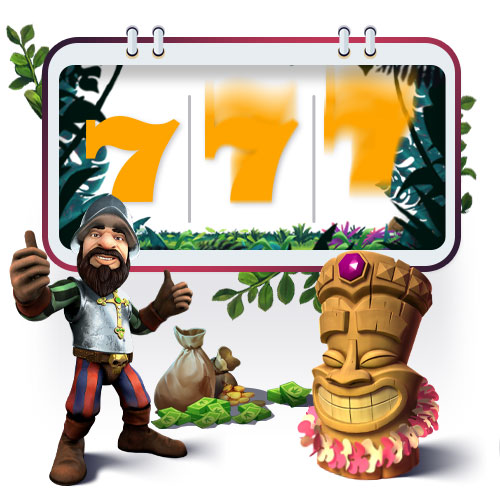 Free Slots
Free Slots

